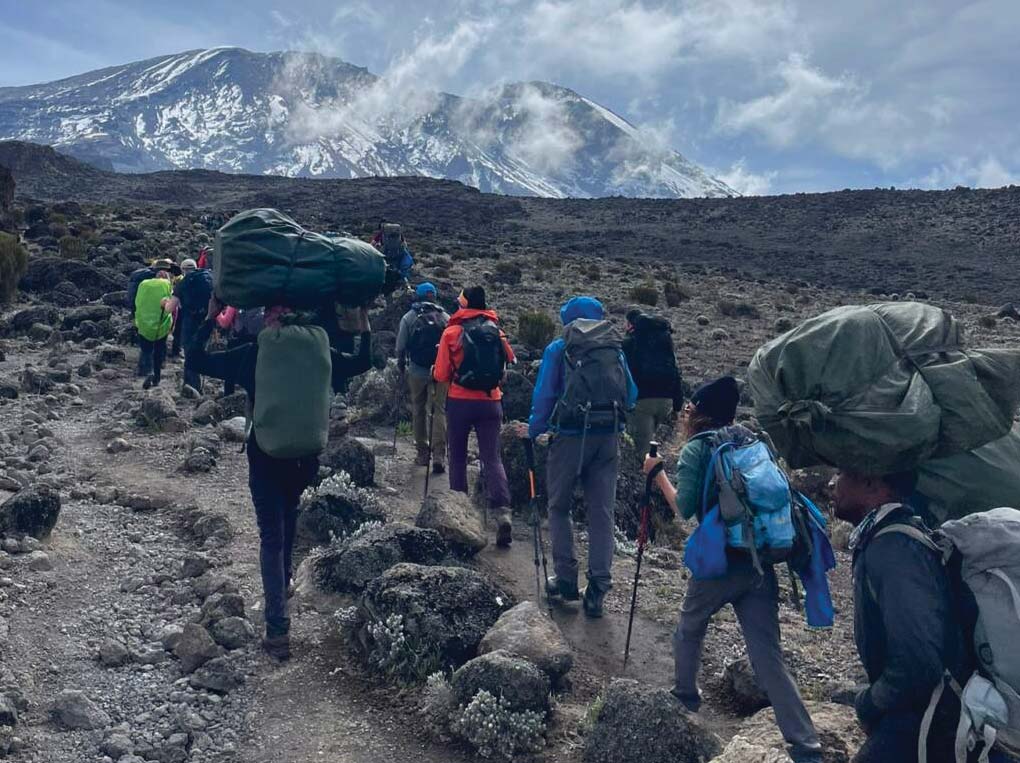I want to tell you a story about Victor. Victor was our lead guide in charge of helping us get to the summit of Mt. Kilimanjaro. Over the 7 days, he did our daily health checks, walked alongside us on the trail to see how we were doing, managed his staff of 44 porters and 4 other guides, and ensured that we had the best experience possible.
Victor’s “office” is on the mountain. He doesn’t sit behind a desk or create reports on KPIs that they are supposed to hit, he’s out in the field, engaging with customers (us) and ensuring that our experience with him, his team, and ultimately the company they all work for was the best it could be. He truly cared about our success but more importantly about us as humans and how to ensure we stayed healthy throughout the journey up the mountain.
While I truly appreciated Victor and his focus on our health and well-being, especially as a solo traveler with no one else to watch out for me, what I appreciated the most is his leadership. He led each of us as climbers and we trusted his authority and guidance. He had been to the summit of Kilimanjaro over 400 times, so who were we to question his direction? But he also led a large team of porters and guides who were directly involved in our success and our experience. Everyone from the porters who took down and put up our tents each day, to the porters who helped cook our meals and serve us so we could relax and prepare for the next leg of the journey. They were a well-oiled machine in how they ran the camp, how they moved things between camps, and how they ensured that we had everything we needed to successfully reach the summit.
The culture that Victor created was no accident, it was intentional down to every last detail. Did things happen that maybe weren’t to plan? Of course. Did Victor react in a negative way? Never. His theme for the entire trip was Hakuna Matata which means no worries. It’s what kept everyone calm and focused on the bigger goal instead of every last detail that could have distracted us. He created a culture where his team was integrated with his customers, they saw us as their family on the mountain and we felt the same. That type of culture does not happen accidentally, it’s curated, refined, and focused on during the entire journey.
Over the week I was on the mountain I observed and thought a lot about what we could learn from Victor. Here are a few of the impactful learnings I took away.
- It’s all in the details, but you should not be.
Yes, customer experience is in the details sometimes, but to create the best customer experience, you cannot be in all the details as the leader. Victor balanced ensuring we were taken care of by relying on his team to operate in their unique skillsets and abilities to also take care of us.
- People watch what you do, not what you say.
If Victor had spent the entire time stressed yet wanted us to be calm, it wouldn’t have worked. He didn’t just help us navigate the journey he did it in a calm way because he knew that was the only way we would make it to the top. He was influencing our mental state by showing up in a calm, relaxed yet in control way. It’s a ripple effect that we all have as leaders that can make or break a culture.
- Pole, Pole – slow, slow
Pole is the Tanzanian word for slow. Throughout the entire trip, Victor would remind us to pole, pole, or slow, slow. What he meant was that we didn’t have to be in a rush, that we should slow down, enjoy the journey, look around, and experience it. This was one of the hardest things for me as I’m so used to running at 150mph every day. To just slow down, look around, and take deep breaths, that absolutely changed the journey for me. And Victor treated his team the same way – take care of yourself, everything else will be fine.
Victor was one of the strongest conscious leaders I have had the honor of observing. He truly cares about his customer and his team.
Here’s a link to a post and a video of Victor and his team if you want to see his culture in action.
This is part 3 of a 10-part “Lessons from the Mountain” series. If you haven’t read the first two parts you can find them here:
Connectors vs. Collectors (Part 1)
Preparation Creates Calm (Part 2)






